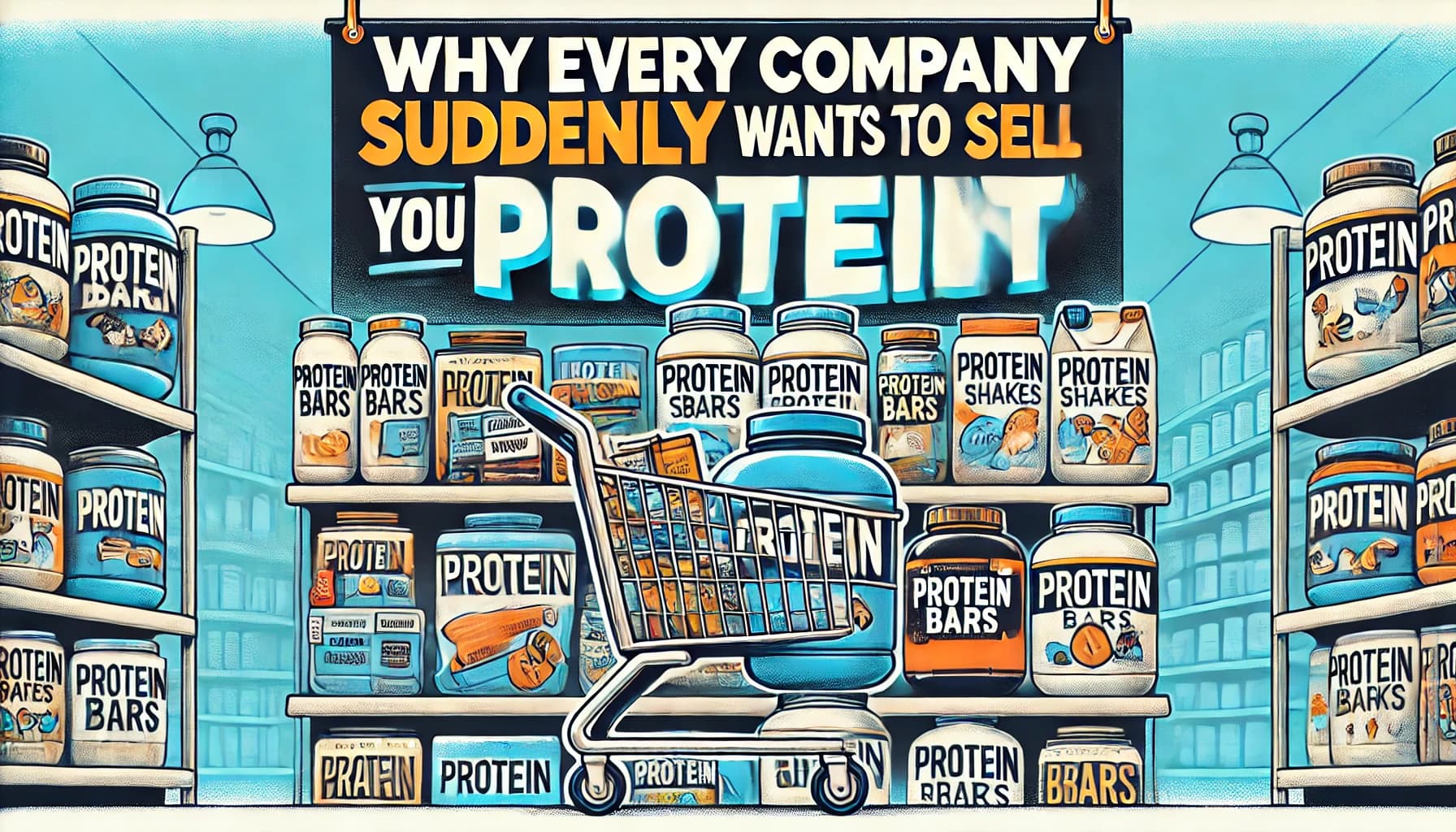
The Protein Power Play: Why Every Company Suddenly Wants to Sell You Protein
Protein. It’s everywhere. From your social media feed to grocery store shelves—and even your local coffee shop—protein has become the star of the health and wellness conversation.
A 2025 Bain survey revealed that 44% of U.S. consumers want to increase their protein intake, a 10% jump from 2024. Businesses are paying attention, and the result? A full-blown protein gold rush.
The Protein Explosion: A Market Gold Rush
What was once a niche health trend is now a massive industry movement. The U.S. protein market, valued at $89.9 billion in 2019, is expected to reach $126.3 billion by 2028.
Big Brands Are All In
- General Mills launched high-protein versions of Cheerios, Wheaties, and Annie’s Mac and Cheese. Between 2020–2024, they filed 78 protein-related patents, up 50% from the previous five years.
- Kellogg’s now earns over $100 million annually from protein cereals and snacks.
- Kraft Heinz redesigned Lunchables to spotlight protein content.
New Players Are Winning Too
Protein Pints, launched in 2023, grew from 14 stores to 7,000+ in under a year, projecting $20 million in revenue. Their formula? Great-tasting protein-rich ice cream that breaks old stereotypes.
Beyond the Grocery Store
- Starbucks is testing high-protein cold foam drinks.
- Dutch Bros introduced protein coffee.
- Lifetime Fitness promotes its own protein supplements.
The message is clear: protein sells.
Why Now? The Forces Fueling the Protein Craze
- GLP-1 weight loss drugs are driving higher protein diets for muscle preservation.
- Fitness influencers and social media glorify protein consumption.
- Government health initiatives are pushing better-for-you products.
- Protein’s reputation has remained untarnished compared to carbs or fat.
- AI meal planners like ChatGPT now often recommend protein-rich options.
Challenges and the Road Ahead
For brands, reformulating classic products without compromising taste is a challenge. Consumers have high expectations, and changes to texture or flavor can backfire.
This gives startups like Protein Pints an edge—they’re building from scratch with protein as the hero, not the afterthought.
Plus, many consumers already get enough protein in a balanced diet. The FDA defines a food as “high in protein” if it provides 20% or more of the recommended daily intake. Classic items like Chobani Greek Yogurt already meet that mark.
Final Thoughts
Despite the hurdles, the outlook is overwhelmingly positive. Protein is no longer a niche trend—it’s a central pillar of modern food marketing and health consciousness. Companies are investing like this is a movement here to stay.
As one expert put it, "Protein is a hallmark to health in general... and it’s not going away."
The protein revolution is real—and it’s only just beginning.